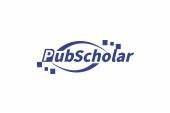CONTENTS
Consensus and Guidelines
- Super-Resolution Ultrasound-Based Habitat Imaging: A Consensus Statement
- Xia ShuJun, Zheng YuHang, Hua Qing, Wei MinYan, Wen Jing, Luo XiaoMao, Yan JiPing, Bai BaoYan, Liu Fang, Dong YiJie, Zhou JianQiao, behalf of The Chinese Artificial Intelligence Alliance for Thyroid on, Ultrasound Breast
- 2025, 9 (2): 97-102. DOI:10.37015/audt.2025.250025
- Abstract ( 355 ) HTML ( 49 ) PDF ( 460KB ) ( 248 )
-
Recent advancements in medical imaging have greatly enhanced our understanding of tissue structure and disease mechanisms. Habitat imaging, which segments imaging data into distinct spatial subregions or "habitats," offers valuable insights into the heterogeneous nature of tumors, challenging traditional treatment strategies and supporting precision medicine. Super-resolution ultrasound (SRUS) has emerged as a promising tool for habitat imaging by exceeding the diffraction limits of conventional ultrasound, thus enabling visualization of microcirculation at the micron scale. Unlike MRI, CT, and PET, SRUS offers superior resolution in depicting microvascular structures, providing complementary information that enhances our understanding of tissue perfusion and microcirculatory heterogeneity. SRUS-based habitat imaging can delineate vascular habitats with high precision, supporting dynamic analysis and offering potential benefits in oncology, such as assessing tumor aggressiveness and monitoring therapeutic responses. As SRUS technology continues to mature, it is poised to become an integral part of personalized medicine, with future studies focusing on standardizing protocols and validating biomarkers to integrate SRUS into routine clinical practice.
Review Articles
- Clinical Utility of Speckle Tracking Echocardiography in Heart Transplantation
- Qin Shuxuan, He Qing, Wu Zhenni, Lin Yixia, Ji Mengmeng, Zhang Li, Xie Mingxing, Li Yuman
- 2025, 9 (2): 103-116. DOI:10.37015/AUDT.2025.240050
- Abstract ( 148 ) HTML ( 12 ) PDF ( 463KB ) ( 128 )
-
Heart transplantation (HT) is a definitive treatment for end-stage heart failure, significantly improving both the quality of life and survival rates of HT recipients (HTx). Speckle tracking echocardiography (STE), a key non-invasive diagnostic method, has become indispensable for providing an in-depth analysis of myocardial mechanics and function. This review focuses on the clinical utility of STE in both pre- and post-transplant settings. The ability of STE to identify subtle cardiac abnormalities and predict post-transplant outcomes underscores its critical role in the clinical management of HTx.
- Reviews on Imaging-based Risk Prediction Models for Ischemic Stroke
- Cui Liuping, Liu Ran, Liu Yumei, Zhou Fubo, Tao Yunlu, Xing Yingqi
- 2025, 9 (2): 117-126. DOI:10.37015/AUDT.2025.240018
- Abstract ( 153 ) HTML ( 14 ) PDF ( 534KB ) ( 129 )
-
Stroke significantly impacts national health due to its high incidence, disability, mortality, and recurrence rates, resulting in a substantial economic burden. Risk prediction models for ischemic stroke help identify high-risk populations for early prevention, diagnosis, and treatment. Various risk-scoring models have been developed for primary and secondary prevention of ischemic stroke, estimating the probability of cardiovascular events over a specified timeframe based on the presence of known risk factors. However, these risk-scoring models often lack precision for cardiovascular disease risk assessments across diverse baseline risk conditions. Integrating image-based biomarkers into existing risk-prediction models may enhance risk stratification accuracy. This review presents the most used models for ischemic stroke prediction and underscores the clinical utility of biomarkers in the management of ischemic stroke.
- Preoperative Diagnosis of Thyroid Follicular Tumor
- Ye Beibei, Zhang Yifeng
- 2025, 9 (2): 127-137. DOI:10.37015/AUDT.2024.240014
- Abstract ( 143 ) HTML ( 8 ) PDF ( 557KB ) ( 102 )
-
The incidence rate of follicular thyroid carcinoma ranks second among thyroid malignancies. Compared to papillary thyroid carcinoma, it has higher rates of recurrence and metastasis, making it a threat to a patient's health. Unfortunately, accurately diagnosing follicular tumors before surgery remains an unresolved issue, as this type of disease is a gray area of fine-needle aspiration biopsy and can be challenging to differentiate clinically from benign thyroid follicular tumors. There are many studies have focused on the preoperative diagnosis of follicular tumors, and much progress has been made. However, according to current research, postoperative biopsies are still the only definitive ways to diagnose follicular thyroid carcinoma, providing evidence of capsule and vascular infiltration. We must emphasize the importance of early detection and diagnosis of follicular thyroid carcinoma to ensure effective treatment and recovery. This review provides a comprehensive summary of the literature on follicular thyroid carcinoma, including its epidemiology, clinical features, imaging diagnosis, genetic and molecular testing of thyroid follicular carcinoma, and a detailed description of the preoperative diagnosis of follicular thyroid carcinoma. We urge medical professionals to use this information to improve their understanding of this disease and enhance their ability to accurately diagnose and treat it.
- Update of Photodynamic Therapy and Sonodynamic Therapy in Treating Rheumatoid Arthritis
- Zhao Chenyang, Sun Desheng, Tan Li, Chen Xiangmei
- 2025, 9 (2): 138-145. DOI:10.37015/AUDT.2025.240024
- Abstract ( 147 ) HTML ( 8 ) PDF ( 521KB ) ( 109 )
-
Rheumatoid arthritis (RA) stands as a prevalent chronic autoimmune condition globally. Although conventional disease-modifying antirheumatic drugs (DMARDs) offer relief from systemic inflammation, they frequently entail undesirable side effects. Phototherapy, encompassing both photodynamic therapy (PDT) and sonodynamic therapy (SDT), employs light and low-frequency ultrasound irradiation to generate reactive oxygen species (ROS), thereby inducing apoptosis in RA inflammatory cells and reducing cytokine expression. This approach presents a promising alternative for RA management. Recently, a range of nanomaterials that induce PDT or SDT have been developed, yielding promising outcomes in arthritis suppression. This review outlines the latest advancements in PDT/SDT-based nanomedicine for RA treatment.
- The Development of Photothermal Imaging Technology in Clinical Applications
- Wang Yan, Zhang Mingbo
- 2025, 9 (2): 146-153. DOI:10.37015/AUDT.2025.240028
- Abstract ( 153 ) HTML ( 10 ) PDF ( 465KB ) ( 147 )
-
Photoacoustic imaging (PAI) is a functional optical imaging modality that utilizes ultrasound as a medium. Owing to its high contrast in optical imaging and deep tissue penetration capabilities inherent in ultrasound, PAI can generate images that integrate both structural and functional information. It has emerged as a novel medical imaging tool, with ongoing research continually expanding its applications within the medical field. The integration of photoacoustic imaging with other modalities to create multimodal imaging systems allows for the synergistic advantages of various technologies, thereby providing more comprehensive diagnostic information. PAI facilitates early and precise diagnosis as well as treatment monitoring for diverse conditions such as tumors, inflammation, and skeletal muscle injuries through real-time quantitative analysis of deoxyhemoglobin levels and molecular markers. This article elucidates the principles of PAI, its various modes of operation, and clinical applications while also anticipating future developmental prospects.
- Infectious Complications after Thermal Ablation of Liver Tumors
- Jiang Lin, Xie Xiaoyan, Xu Ming
- 2025, 9 (2): 154-162. DOI:10.37015/AUDT.2025.240022
- Abstract ( 127 ) HTML ( 11 ) PDF ( 516KB ) ( 107 )
-
Infectious complications are common postoperative issues after thermal ablation of liver tumors, including liver abscess, biliary tract infection, sepsis, which can significantly impact patient prognosis. Common pathogens associated with these infections include Escherichia coli, Enterococcus, Klebsiella pneumoniae, Staphylococcus aureus. Diagnosing infectious complications after ablation requires an integrated approach, combining clinical manifestations, laboratory tests, and imaging examinations. Notably, specific imaging findings may help identify liver abscess, biliary tract infection and infection secondary to gastrointestinal perforation. Risk factors for post-ablation infection include a history of biliary interventions or dysfunction of the sphincter of Oddi, prior arterial chemoembolization or transarterial radioembolization, and ablation performed at anatomically challenging sites. For high-risk patients, appropriate preventive measures should be implemented. Treatment typically involves antibiotics and catheter drainage, with commonly used antibiotics including penicillins, cephalosporins, quinolones, metronidazole. Understanding the diagnosis, risk factors, prevention, and treatment strategies for post-ablation infections is critical for optimizing patient outcomes. This review aims to summarize the current literature on infections after thermal ablation of liver tumors, detailing the common infection sites, pathogens, diagnostic approaches, prevention strategies, and treatment methods. Additionally, it explores the potential mechanisms underlying infection development after ablation.
- The Application of Ultrasound in the Pre-operative Evaluation of Cervical Cancer
- Zhang Juan, Shen Cuiqin, Du Lianfang, Li Fan
- 2025, 9 (2): 163-170. DOI:10.37015/AUDT.2025.240020
- Abstract ( 137 ) HTML ( 6 ) PDF ( 536KB ) ( 107 )
-
Cervical cancer is a common gynecologic malignancy worldwide, ranking fourth for both incidence and mortality. Imaging and pathology assessments are incorporated in the revised 2018 International Federation of Gynecology and Obstetrics staging system for cervical cancer. The use of imaging techniques for pre-operative evaluation of cervical cancer has been increasing. Among imaging modalities for evaluating cervical cancer, ultrasound is more easily accessible, faster and more widely available than other options such as computed tomography or magnetic resonance imaging. Advanced technique in ultrasound, such as three-dimension ultrasound and contrast-enhanced ultrasound, have improved the clinical application of ultrasound in cervical cancer. Ultrasound may provide highly accurate information on detecting tumor presence and assessing local extent if performed by well-trained sonographers, as the experience level of readers is also critical for correct pre-operative staging and evaluation of treatment response. In the future, ultrasound imaging with the assistance of artificial intelligence will play an even greater role in management. This review aims to present the most updated applications of ultrasound in the pre-operative evaluation of cervical cancer.
Original Research
- Evaluation of Hepatic Steatosis Grades with Thermoacoustic Imaging in a Rabbit Model
- Xiang Hongjin, Huang Lin, Zheng Zhu, Li Jiawu, Qiu Tingting, Wu Zhenru, Shi Yujun, Jiang Huabei, Ling Wenwu, Luo Yan
- 2025, 9 (2): 171-180. DOI:10.37015/AUDT.2025.240074
- Abstract ( 139 ) HTML ( 13 ) PDF ( 714KB ) ( 129 )
-
Objective: Simple hepatic steatosis can no longer be ignored as a "benign finding", and the management and evaluation of the clinical interventions depend on the degree of hepatic steatosis. Here, we aimed to investigate the feasibility and diagnostic performance of thermoacoustic imaging (TAI) for assessing hepatic steatosis grades in a rabbit model.
Methods: High-fat diet was used for the rabbits. To collect various degrees of hepatic steatosis, the diet duration was different (4, 8, 12, 16, 20, and 24 weeks). An in-vivo liver TAI imaging system was developed. At the end of the feed point, rabbits underwent the TAI and laparotomy for liver histopathology.
Results: We performed TAI and histopathologic examinations for 33 rabbits developing none (n = 4), mild (n = 16), moderate (n = 6), and severe (n = 7) steatosis with/without hepatic fibrosis. A strong correlation was found between the thermoacoustic fat coefficient (TAFC) derived from TAI and liver fat percentage (Pearson correlation coefficient, 0.865; P < 0.001). Besides, TAFC showed significant differences between the consecutive grades of steatosis. TAI potentially provided a good diagnostic performance, with 83% sensitivity and 100% specificity for mild steatosis, 92% sensitivity and 95% specificity for moderated steatosis, and 100% sensitivity and 92% specificity for severe steatosis. The fibrosis stage did not significantly affect the TAFC.
Conclusion: Our findings demonstrate that TAI is a promising way to evaluate hepatic steatosis grades.
- Ultrasonographic Characteristics and Outcomes of Fetal Umbilical-portal-systemic Venous Shunts: A Single-center Study
- Liu Jianjun, Zhang Jun, Xue Yafang, Chen Ying, Qiu Mei, Guo Yanli
- 2025, 9 (2): 181-188. DOI:10.37015/AUDT.2025.240019
- Abstract ( 108 ) HTML ( 6 ) PDF ( 459KB ) ( 98 )
-
Objective: To investigate the ultrasonographic characteristics and outcomes of fetal umbilical-portal-systemic venous shunts (UPSVS).
Methods: UPSVS cases at a single center between January 2015 and December 2022 were retrospectively investigated. The ultrasonographic features, types, and postnatal outcomes of fetal UPSVS were analyzed and the outcomes were followed up on. The study was approved by our institutional review board (Approval Number KY2021130).
Results: Forty UPSVS cases, including 4 Type I, 18 Type II, and 18 Type III (16 with IIIa and 2 with IIIb) were identified. Two Type I cases were terminated because of the complete absence of the portal venous (PV) system. Genetic assessment revealed that one patient with Type I had a q22.11 deletion in trisomy 21. Type II is characterized by structural malformations, particularly cardiovascular abnormalities. Couples opted for pregnancy termination in four cases of Type II. The most common anomaly in Type III shunts was cardiac enlargement, followed by fetal growth restriction. Pregnancy was terminated in six cases of Type IIIa as requested by the couples, one resulting from premature birth, and two because of the completely absent PV system. Genetic tests showed that trisomy X had a microduplication in one patient. The shunt spontaneously closed after birth in all Type IIIa cases.
Conclusions: Prenatal diagnosis of UPSVS using ultrasonography is feasible and valuable for perinatal management and prenatal consultation. The fetal postnatal prognosis is determined by the presence of anomalies in the PV system, genetics, or structure.
- The Impact of B-type natriuretic peptide (BNP) on Transplanted Liver Hemodynamics and Short-Term Prognosis: A Single-Center Big Data Retrospective Study
- Yu Huimin, Tang Ying, Niu Ningning, Wu Hongtao, Zhang Guoying, Wang Mingyang, Hao Xiaoye, Liu Jing
- 2025, 9 (2): 189-196. DOI:10.37015/AUDT.2025.240031
- Abstract ( 111 ) HTML ( 6 ) PDF ( 464KB ) ( 96 )
-
Objective: This study investigates the correlation between early B-type natriuretic peptide (BNP) levels and ultrasound hemodynamics following liver transplantation, with the aim of evaluating short-term prognosis.
Methods: We analyzed data from 924 patients who underwent liver transplantation between December 2012 and October 2022. Ustilizing the clinical liver transplantation ultrasound imaging database software V1.0 developed by Tianjin First Central Hospital, we recorded various ultrasonic dynamic parameters, including peak systolic velocity (PSV), end-diastolic velocity (EDV), peak systolic/diastolic flow velocity (S/D), resistance index (RI), pulsatility index (PI), and portal vein velocity (PVV). Additionally, BNP values were recorded within 24 hours post-surgery. We analyzed the correlation between ultrasound blood flow parameters and BNP levels. Patients were categorized into death and survival groups based on their prognosis at 3 months, and differences in blood flow parameters were compared between these groups. Furthermore, short-term prognosis was assessed based on blood flow parameters associated with diastolic blood flow.
Results: Negative correlations were observed between BNP and the resistance index (RI) and pulsatility index (PI) on the first day after surgery (r = -0.473, r = -0.602, both P < 0.05). Similar correlations were found on the fifth day post-surgery (r = -0.406, r = -0.518, both P < 0.05). Additionally, peak systolic velocity (PSV), end diastolic velocity (EDV), and BNP levels were significantly higher in the death group compared to the survival group on both the first and fifth days after surgery (all P < 0.05), while RI and PI were lower in the death group (both P < 0.05). The systolic/diastolic (S/D) ratio in the death group was also lower than that in the survival group on the first and fifth days post-surgery (both P = 0.001). Furthermore, the presence of early diastolic blood flow after surgery was not associated with short-term prognosis in either group (both P > 0.05).
Conclusion: Early BNP levels correlate with ultrasound blood flow parameters following liver transplantation, providing a foundation for evaluating cirrhotic cardiomyopathy. Patients with a poor short-term prognosis exhibit elevated BNP levels, altered dynamic circulation, and low-resistance blood flow
- Predictive Value of AIP and AGR for Non-alcoholic Fatty Liver Disease and Significant Liver Fibrosis
- Zhang Simin, Zhou Changyu, Shi Xianquan, Huang Lizhen
- 2025, 9 (2): 197-206. DOI:10.37015/AUDT.2025.250017
- Abstract ( 97 ) HTML ( 5 ) PDF ( 552KB ) ( 98 )
-
Objective: Non-alcoholic fatty liver disease (NAFLD) is a chronic liver disease with a high incidence worldwide, and its incidence is increasing year by year. Plasma atherogenic Index (AIP) is used to assess the risk of cardiovascular disease and metabolic dysfunction, and albumin to glutamyltransferase ratio (AGR) is often used to assess liver function, nutritional status, and immune system diseases. This study aimed to assess the association of AIP, AGR and non-alcoholic fatty liver disease and to establish a practical and cost-effective prediction model.
Methods: Using data from the National Health and Nutrition Examination Survey (NHANES) from March 2017 to March 2020, residents 18 years of age and older with complete demographic, laboratory, and instantaneous elastography test data were included. SPSS 27.0 and R 4.4.0 were used to analyze the data, single-factor Logistic regression analysis was applied to screen the influencing factors of NAFLD, stepwise regression was applied to screen the variables, and multi-factor Logistic regression was performed to construct the prediction model and draw the column graph.
Results: AIP (OR = 3.549, 95% CI: 1.876-6.712) was a risk factor for NAFLD, and AGR (OR = 0.782, 95% CI: 0.655-0.934) was a protective factor for NAFLD. The calibration curve of NAFLD was stable, and the ROC curve AUC was 0.859.
Conclusion: AIP is an independent risk factor for NFLAD. AGR is an independent protective factor for NAFLD
- Improved Ultrasound Evaluation Method for Diagnosing Nonalcoholic Fatty Pancreatic Disease: Correlation with MRI mDixon-Quant
- Lin Jiaojiao, Ke Helin, Xu Shaodan, Xiao Yang, Han Lina, Lyu Guorong, Li Shilin
- 2025, 9 (2): 207-214. DOI:10.37015/AUDT.2025.230059
- Abstract ( 113 ) HTML ( 7 ) PDF ( 618KB ) ( 103 )
-
Purpose: Early diagnosis and treatment of non-alcoholic fatty pancreatic disease (NAFPD) can effectively intervene in the development of type 2 diabetes. This study aimed to evaluate the utility of an improved ultrasound method for diagnosing NAFPD.
Methods: All patients underwent abdominal ultrasonography (US) and magnetic resonance imaging (MRI) mDixon-Quant technique. Patients with a pancreatic fat fraction (PFF) > 6.2% were in the NAFPD group (NA) and the rest were in the normal group (NC). MRI mDixon-Quant technique was used to evaluate the diagnostic efficiency of NAFPD with improved ultrasound diagnosis.
Results: This study included 46 participants. The MRI mDixon-Quant had good repeatability and reproducibility in measuring PFF. The kappa value of the improved version ultrasound (IVUS) method and MRI diagnosis was 0.760 (95% confidence interval [CI] = 0.662-0.858, P < 0.001). That of traditional version ultrasound (TVUS) and MRI diagnosis was 0.497 (P < 0.001). Statistical analyses revealed that pancreatic grading based on both ultrasound evaluation methods correlated with PFF, with IVUS (R2 = 0.812) superior to TVUS (R2 = 0.496). Body weight, body mass index, triglyceride level, abdominal circumference, abdominal visceral fat, total abdominal fat, abdominal visceral fat area, and liver fat content were significantly higher in the NA versus NC group (P < 0.05). Fat fractions of the pancreatic head, body, and tail in the NA group were significantly higher than those in the NC group (P < 0.05).
Conclusion: IVUS more consistently predicts NAFPD and correlates better with MRI than TVUS.
Case Reports
- Tietze Syndrome in A Female POST-COVID-19 Infection: A Review of Current Understanding and Ultrasound Diagnosis
- Sun Yang, Li Mofan, Wang Shumin
- 2025, 9 (2): 215-218. DOI:10.37015/AUDT.2025.240029
- Abstract ( 90 ) HTML ( 6 ) PDF ( 381KB ) ( 94 )
-
Tietze syndrome which refers to painful non-purulent inflammation of the costal cartilage or sternoclavicular joint is a rare disease that is poorly reported. We report a case of Tietze syndrome in a 52-year-old female with sternoclavicular joint pain and chest wall mass post-COVID-19 virus infection. She suffered pain and swelling in the left sternoclavicular joint, which were relieved after hot compress. This case is the first report on Tietze syndrome post-COVID-19 virus infection in China. We report this case to improve our understanding of this disease and discuss possible mechanism from the perspective of embryology and pathology.
- Glomus Tumor of the Female Vulva: A Case Report and Review
- Liu Xinyu, Yuan Yinuo, Meng Yao, Zhang Wenjing, Xu Huimin, Zhang Jinrui, Liu Cun
- 2025, 9 (2): 219-223. DOI:10.37015/AUDT.2025.240035
- Abstract ( 104 ) HTML ( 6 ) PDF ( 474KB ) ( 101 )
-
Glomus tumor is a benign, subcutaneous neoplasm that typically arises in regions abundant in glomus bodies, manifesting as a painful nodule. Currently, perineal glomus tumors are rarely reported in the literature. Herein, we present a unique case of glomus tumor originating in the perineal region. Ultrasound examination revealed a heterogeneous mass within the subcutaneous soft tissue layer of the vulva, featuring a distinct boundary and peripheral blood flow signals. The ultrasound contrast imaging of this mass demonstrated rapid peripheral ring enhancement during the arterial phase, followed by a gradual inward perfusion from the periphery towards the center of the nodule-like or branching-like structure, exhibiting concentric enhancement. The internal portion of the nodule showed low enhancement, which progressively diminished during the venous and delayed phases. Subsequently, an ultrasound-guided biopsy confirmed the diagnosis of glomus tumor, and the patient underwent successful surgical treatment.
- Imaging Diagnosis of Neonatal Umbilical Arteriovenous Malformation Complicated with Portosystemic Shunt
- Zhang Minyu, Jia Baocheng, Huang Liuming
- 2025, 9 (2): 224-227. DOI:10.37015/AUDT.2025.240012
- Abstract ( 92 ) HTML ( 5 ) PDF ( 438KB ) ( 91 )
-
In the last twenty years, there were less than 10 cases of umbilical arteriovenous malformations have been reported, which usually had single complication, included mild cardiac dilatation, pulmonary hypertension, hemorrhagic shock, and hepatic damage. Unlike previous cases, we report a case of neonate multiple organ failure caused by umbilical arteriovenous malformation complicated with portosystemic shunt, which was diagnosed by ultrasound and arteriography. We provide a new insight that umbilical arteriovenous malformation and portosystemic shunt should be considered in neonates with unexplained multiple organ failure, for researching the cause of neonate multiple organ failure, especially in those with right heart overload, hyperammonemia, and liver dysfunction. A targeted and comprehensive Dopler ultrasound can make a definitive diagnosis as soon as possible.














